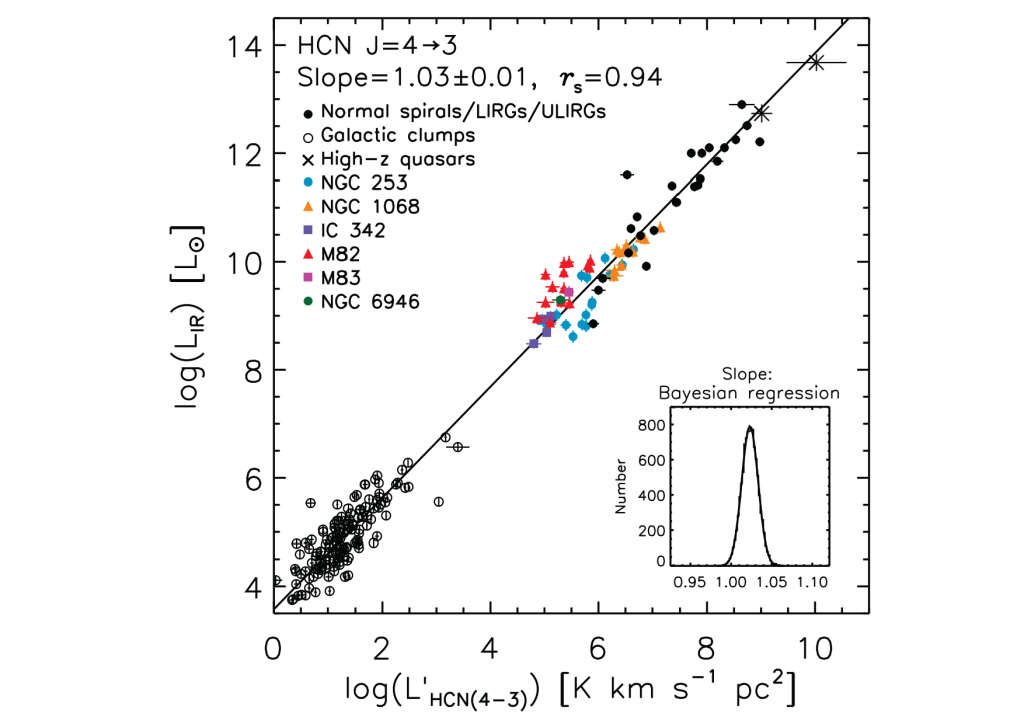Determining the role of dense gas in star formation
We are observing a large, mass-selected sample of dust-continuum traced, star-forming molecular clouds in HCN J=3-2 and HCO+ J=3-2 with ‘Ū’ū. This sample includes clouds in the Central Molecular Zone (CMZ), the Inner Galaxy, and the Outer Galaxy. Dense gas is vital to the star-formation process, and high-resolution observations of this dense gas in a large sample of resolved star-forming sources is crucial to understanding its exact role in regulating star-formation efficiency.
Predictive, empirical relationships of star formation, such as the Kennicutt-Schmidt law, are able to link the scaling of the star-formation rate surface density with the surface density of the gas. However, this relationship only holds for normal and dwarf galaxies, and becomes super-linear in starburst systems and breaks down on the smallest scales of individual giant molecular clouds. However, when dense-gas observations are used, these relationships survive, once again indicating the apparent importance of dense gas in the star-formation process.
The key science outcomes and goals of this project are:
- Understand the impact of Galactic environment on the physics of dense gas, allowing for an understanding of how dense gas is produced and intrinsically linked to star formation.
- Distinguish between star-formation theories, and whether the star-formation rate is controlled by the free-fall time within bound structures or the amount of dense gas available for star formation.
- Produce LIR – Lgas relationships linking resolved Galactic clumps, Galactic molecular clouds, extragalactic systems and ULIRGS to study the universality of the star-formation process.
- Determine the cause of variations of the HCN/HCO+ ratio, and how it is linked to the physical conditions caused by Galactic environment.
- Find a sample of extreme star-forming sources using maps of dense-gas mass fraction and a sample of Galactic mini-starbursts using a LIR – Lgas relationship produced using CO maps.
- Link the clump-mass fraction to the star-formation efficiency and clump-formation efficiency.
- Identify outflows and active regions of star formation and determine the infall rates of the gas into individual clumps
- Provide a legacy sample matching those of extragalactic studies for future studies.

LIR – LHCN relationship from Tan et al. (2018) spanning ten orders of magnitude in luminosity from Galactic clumps to high-redshift ULIRGs.
Coordinators: David Eden (UK), Xue-Jian Jiang (EAO), James Di Francesco (Canada), Kee-Tae Kim (South Korea), Yu Gao (China), Masa Imanishi (Japan), and Raffaele Rani (Taiwan)
– JCMT program code: M22AL002



